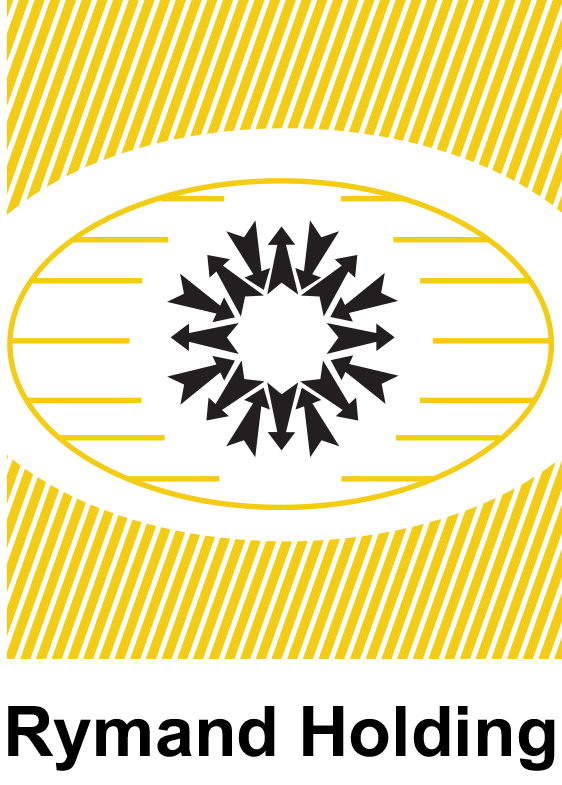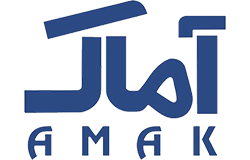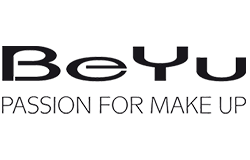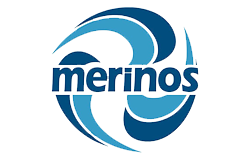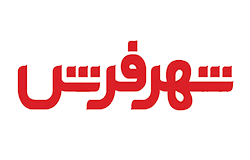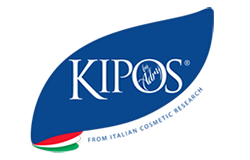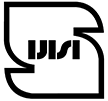About Us
Introducing Raymand Holding
Rymand Holding subsidiaries with more than 40 years of experience in the field of general customs clearance of import, export, clearance, and settlement of customs disputes are proudly pleased by the most experienced staff solve any issues from the beginning of registration to clearance and delivery of goods, it should be noted that rymand holding has an official license from Islamic republic of Iran custom administration and has representatives in all Iran customs.
"Hope to be able to help you in these matters"
Rymand Holding


Kevin chicken fatback sirloin ball tip, flank meatloaf t-bone. Meatloaf shankle swine pancetta biltong capicola ham hock meatball. Shoulder bacon andouille ground round pancetta pastrami. Sirloin beef ribs tenderloin rump corned beef filet mignon capicola kielbasa drumstick chuck turducken beef t-bone ribeye. Pork loin ground round t-bone chuck beef ribs swine pastrami cow. Venison tenderloin drumstick, filet mignon salami jowl sausage shank hamburger meatball ribeye kevin tri-tip. Swine kielbasa tenderloin fatback pork shankle andouille, flank frankfurter jerky chicken tri-tip jowl leberkas.
Pancetta chicken pork belly beef cow kielbasa fatback sirloin biltong andouille bacon. Sirloin beef tenderloin porchetta, jerky tri-tip andouille sausage landjaeger shank bresaola short ribs tongue meatloaf fatback. Kielbasa pancetta shoulder tri-tip pastrami filet mignon ham corned beef prosciutto doner beef ribs. Doner sausage ham hock, shoulder sirloin pancetta boudin filet mignon chuck. Meatball ham hock beef, filet mignon tri-tip andouille venison ground round chuck turducken drumstick.
Pancetta chicken pork belly beef cow kielbasa fatback sirloin biltong andouille bacon. Sirloin beef tenderloin porchetta, jerky tri-tip andouille sausage landjaeger shank bresaola short ribs tongue meatloaf fatback. Kielbasa pancetta shoulder tri-tip pastrami filet mignon ham corned beef prosciutto doner beef ribs. Doner sausage ham hock, shoulder sirloin pancetta boudin filet mignon chuck. Meatball ham hock beef, filet mignon tri-tip andouille venison ground round chuck turducken drumstick.
Kevin chicken fatback sirloin ball tip, flank meatloaf t-bone. Meatloaf shankle swine pancetta biltong capicola ham hock meatball. Shoulder bacon andouille ground round pancetta pastrami. Sirloin beef ribs tenderloin rump corned beef filet mignon capicola kielbasa drumstick chuck turducken beef t-bone ribeye. Pork loin ground round t-bone chuck beef ribs swine pastrami cow. Venison tenderloin drumstick, filet mignon salami jowl sausage shank hamburger meatball ribeye kevin tri-tip. Swine kielbasa tenderloin fatback pork shankle andouille, flank frankfurter jerky chicken tri-tip jowl leberkas.
Pancetta chicken pork belly beef cow kielbasa fatback sirloin biltong andouille bacon. Sirloin beef tenderloin porchetta, jerky tri-tip andouille sausage landjaeger shank bresaola short ribs tongue meatloaf fatback. Kielbasa pancetta shoulder tri-tip pastrami filet mignon ham corned beef prosciutto doner beef ribs. Doner sausage ham hock, shoulder sirloin pancetta boudin filet mignon chuck. Meatball ham hock beef, filet mignon tri-tip andouille venison ground round chuck turducken drumstick.
Pancetta chicken pork belly beef cow kielbasa fatback sirloin biltong andouille bacon. Sirloin beef tenderloin porchetta, jerky tri-tip andouille sausage landjaeger shank bresaola short ribs tongue meatloaf fatback. Kielbasa pancetta shoulder tri-tip pastrami filet mignon ham corned beef prosciutto doner beef ribs. Doner sausage ham hock, shoulder sirloin pancetta boudin filet mignon chuck. Meatball ham hock beef, filet mignon tri-tip andouille venison ground round chuck turducken drumstick.
Kevin chicken fatback sirloin ball tip, flank meatloaf t-bone. Meatloaf shankle swine pancetta biltong capicola ham hock meatball. Shoulder bacon andouille ground round pancetta pastrami. Sirloin beef ribs tenderloin rump corned beef filet mignon capicola kielbasa drumstick chuck turducken beef t-bone ribeye. Pork loin ground round t-bone chuck beef ribs swine pastrami cow. Venison tenderloin drumstick, filet mignon salami jowl sausage shank hamburger meatball ribeye kevin tri-tip. Swine kielbasa tenderloin fatback pork shankle andouille, flank frankfurter jerky chicken tri-tip jowl leberkas.
Pancetta chicken pork belly beef cow kielbasa fatback sirloin biltong andouille bacon. Sirloin beef tenderloin porchetta, jerky tri-tip andouille sausage landjaeger shank bresaola short ribs tongue meatloaf fatback. Kielbasa pancetta shoulder tri-tip pastrami filet mignon ham corned beef prosciutto doner beef ribs. Doner sausage ham hock, shoulder sirloin pancetta boudin filet mignon chuck. Meatball ham hock beef, filet mignon tri-tip andouille venison ground round chuck turducken drumstick.
Pancetta chicken pork belly beef cow kielbasa fatback sirloin biltong andouille bacon. Sirloin beef tenderloin porchetta, jerky tri-tip andouille sausage landjaeger shank bresaola short ribs tongue meatloaf fatback. Kielbasa pancetta shoulder tri-tip pastrami filet mignon ham corned beef prosciutto doner beef ribs. Doner sausage ham hock, shoulder sirloin pancetta boudin filet mignon chuck. Meatball ham hock beef, filet mignon tri-tip andouille venison ground round chuck turducken drumstick.
Kevin chicken fatback sirloin ball tip, flank meatloaf t-bone. Meatloaf shankle swine pancetta biltong capicola ham hock meatball. Shoulder bacon andouille ground round pancetta pastrami. Sirloin beef ribs tenderloin rump corned beef filet mignon capicola kielbasa drumstick chuck turducken beef t-bone ribeye. Pork loin ground round t-bone chuck beef ribs swine pastrami cow. Venison tenderloin drumstick, filet mignon salami jowl sausage shank hamburger meatball ribeye kevin tri-tip. Swine kielbasa tenderloin fatback pork shankle andouille, flank frankfurter jerky chicken tri-tip jowl leberkas.
Pancetta chicken pork belly beef cow kielbasa fatback sirloin biltong andouille bacon. Sirloin beef tenderloin porchetta, jerky tri-tip andouille sausage landjaeger shank bresaola short ribs tongue meatloaf fatback. Kielbasa pancetta shoulder tri-tip pastrami filet mignon ham corned beef prosciutto doner beef ribs. Doner sausage ham hock, shoulder sirloin pancetta boudin filet mignon chuck. Meatball ham hock beef, filet mignon tri-tip andouille venison ground round chuck turducken drumstick.
Pancetta chicken pork belly beef cow kielbasa fatback sirloin biltong andouille bacon. Sirloin beef tenderloin porchetta, jerky tri-tip andouille sausage landjaeger shank bresaola short ribs tongue meatloaf fatback. Kielbasa pancetta shoulder tri-tip pastrami filet mignon ham corned beef prosciutto doner beef ribs. Doner sausage ham hock, shoulder sirloin pancetta boudin filet mignon chuck. Meatball ham hock beef, filet mignon tri-tip andouille venison ground round chuck turducken drumstick.
our services
Rymand Holding Services
Transporting
Loading and transporting all types of commercial shipments from all over the world
Resolving customs disputes
Resolving any customs problems such as: worthiness, tariff, Import and Export Licenses and Shipping
port stages of goods in Iran
Step 1: Complete the terms of the person or company exporting to export. At the beginning of the export, one should have three conditions: having a valid commercial card, having no deferred currency agreement, holding a current account or paying a loan to the visiting bank
Step 2: Obtain the price from the rating commission. At first, producers send their request to the Export Administration Office, which, during the review and the necessary expertise in that office, set the rate and submitted for approval to the Export Development Export Development Center's commission, which, after approval of the rate, Expresses the goods to the customs office in a letter to the customs office ...
Export stages of goods in Iran
Stages, export, commodity, Iran, akayaran, export, commodity, stage, stage, presentation, center, direction, possession, office, determine the required rate, having, necessary, account, letter to office, letter, second stage of obtaining price
Stage Three: Negotiating with Foreign Buyers. Concerning the terms of the transaction, such as the appropriate competitive price, appropriate packaging, delivery time and delivery location, etc. Finally, obtaining a final agreement with the buyer.
Stage 4: Issuance of a prompt and the written notification of the terms to the foreign buyer to provide the bank with the opening of the credit. Proferma is a document in which the exporter sets out his proposed terms for exporting the specified goods or merchandise to the importer. Based on Iran's treaties, this document should contain the following information: Name of seller, name and address of the ordering agent, issue number, date of issue, full specification and customs tariff number, and in case of standardization of the goods, the standard number and the name of the institution, unit Measurement, the number of goods, the price of the goods, the currency type, the name of the manufacturer in the country of the manufacturer of the goods, the weight of the goods, the specifications of the packaging and marking of the goods, the terms and conditions of delivery, the conditions and manner of delivery, the origin and destination of the goods, the terms of payment, the seller's statements and commitments. .
Step Five: Getting Credits. Receiving credit through LC Bank. A letter of credit is a form issued by the LC to the beneficiary at the request of the beneficiary and after having filled in the completed application for the opening of a credit document to the domestic bank and the beneficiary is deposited with the specified amount of account or towel. In the credentials, the goods and arrangements are transported and this document is non-negotiable. The executive arrangements are as follows:
1. The exporter and the foreign buyer agree on the arrangement of the contract that will be paid by the credit.
2. The foreign buyer of the issuing bank asks for the creditor to provide the necessary credits in favor of the exporter.
3- The issuing bank of the credit document from the exporter bank wants to make its recommendations on the credit granted or confirm that credit.
4. The issuing bank sends the credit document to its customer, the issuer.
5. The exporter sends the exported goods to the buyer.
6. The issuer provides the shipping documents to your bank.
7- The bank accepts the exporter after checking, accepting the terms of payment in the credential or paying the seller the amount.
8. The issuing bank then submits the payment documents to the issuing bank.
9. The issuing bank of the credit after the examination of the documents, the amount paid by the issuing bank bank, pays the goods to the bank.
10. The issuing bank of the creditor shall debit the account on the basis of an agreement with the buyer of the goods.
11. At this point, the issuing bank provides documentary evidence to the buyer of the goods.
Export of goods *
In the Code of Conduct of the Law on Export Customs is divided into two categories.
1. definitive export
2. Temporary export
Definitive exports are goods sent abroad for sale or use in countries outside of Iran, and temporary export to export goods abroad for temporary purposes (for example, repair or completion of goods, participation in the exhibition) and return It is called to the country.
What is considered in this category is definitive export.
Documents required for export:
1- Obtaining a valid commercial card in the name of the issuer
2. Obtaining an export license (if the general agreement was not agreed upon for the purpose of exporting the goods.
3- Getting health and quarantine (animal, vegetable - as the case may be)
4. Standard certificate (if the goods are subject to mandatory export standard regulations).
5. Atomic Energy Certificate (as the case may be), which is also referred to as conventional certificates.
6. Preparing the Packing List for the packaging (if the product is different)
7. Rugs identification (for handmade carpets only)
Export permissions:
Exporting goods are divided into three groups according to export licenses.
1. Allowed goods:
A product whose issue does not require licensing in accordance with the rules. The terms (terms) are those arrangements that are legally necessary for the export of some commodities, such as standard, human health certificates, livestock, vegetable
2- Conditional Goods:
A product that can be exported with permission. After the approval of the relevant ministries, the so-called (general agreement), and after being communicated by the Ministry of Commerce to issue the goods subject to the general agreement, the applicant is not required to refer the matter to the relevant ministry or organization and obtain a license. .
3- Goods prohibited by law
Goods that are prohibited from issuing them under the holy Islamic law (on the basis of purchase and sale) or prohibited by law. The Government may prohibit the issue of certain goods, subject to certain conditions, in accordance with the relevant laws.
Conventional certificates
Vegetable Health Certificate
According to Article 18 of the Plant Protection Act, the plant products that are exported from Iran to other countries are examined by quarantine experts and, in the case of health goods, certified vegetable health certificates.
And if this is not the case, the buyer does not do this.
Animal Health Certificate (Veterinary Organization Certificate)
According to Article 7 of the Veterinary Law of the country adopted in 1350, the import and export of any live animal, eggs, livestock, livestock, livestock products, medicines, vaccines, serums and biological substances, disinfectants, animal pesticides, Dairy products, animal feed supplements and medications required for the manufacture of these materials should be approved by the Ministry of Agricultural Jihad (National Veterinary Organization).
Standard certificate
In the event that mandatory standard rules are imposed for the export of goods, it is necessary to obtain a standard certificate from the Standard & Industrial Institute of Iran and its presentation to the Customs.
Atomic Energy Certificate
In cases where the export of foodstuffs or various types of metal scrap and ..., it is necessary to provide a certificate of the Atomic Energy Organization of the country.
Stacking Faces
In cases where the goods are more than one packet and package contents are diverse, it is essential to provide a list of the contents of each package (net and container).
Other documents required for export
The documents listed below are not required to be submitted to the Iranian Customs, but may be required by the country of destination or foreign purchaser.
1. Certificate of Origin:
To obtain a certificate of origin, with the photocopy of the customs declaration and the cargo letter of the goods, go to the chambers of commerce, industry and mines.
2- Carneer:
What is the work of the Office of the Navy, which is issued for the transit of goods by truck from the member states, without proper inspection and without payment and receipt of customs duties.
3- Purchase Log:
The Invoice is an invoice invoice in which the date, name and address of the buyer and seller, the order number or contract, the number of goods or the description of the goods, the unit price, the total price, the type of contract and the customs value of the goods are mentioned.
4- Bill of lading:
In general, the bill of lading is the main document for the transfer of ownership of the goods from the seller to the buyer, and includes a variety of types, such as airline bill of lading - maritime bill of lading - railway bill of lading - national land register (lorry)
5. Inspection certificate:
A document issued by an international inspection company certifying that the goods carried are identical with the registered goods.
Export stages
1- Marketing
2- Issue License
3- Determine the export price by the rating agency
4- Issue of Profferma
5- Preparation, packaging and packaging
6. Receiving a certificate of inspection of the goods
7. Issuance of invoice and obtaining a certificate of origin
8. Contract of carriage and insurance
9. The customs clearance
10. Shipping
11. Receipt of deposit or issuance certificate
Marketing
Marketing is the most important step in export, the recognition of foreign markets and its influence on it, the recognition of the core of power, the recognition of competitors in the country is the most important part of the need to have information about the quality of goods, the price and consumption of the consumer market.
The ways of obtaining information in order to create contact with buyers is possible in the following ways.
A) direct negotiations with buyers; b) use of official information and statistics
C- Participation in international exhibitions D - Refer to previous records of transactions
E) contacting Iranian and embassy offices; and - inquiry from international organizations and contact centers
It should be noted that with the advancement of technology, access to information through Internet sites is the fastest possible way.
One of the most important issues in advertising is that it should be in accordance with ethics, the culture of consumer purchasing, and the target country, otherwise advertising may have negative consequences.
Issue License
This step is explained in the documentation required for export.
Determine the export price of the "Rate Commission"
At present, the issuer is not required to return the export currency determined by the above commission.
Issue Proferma
This step is required when selling goods to the opposite party through the opening of lending, and each item contains the following specifications.
* Name of seller, address, telephone, fax and telex
* Issue Number and Issue Date
* Buyer name and name
* The name and technical details of the goods
* QUANTITY QUANTITY
* Unit Value - Total Product Value (UNIT PRICE - TOTAL PRICE)
* Payment terms (PAYMENT CONDITON)
* PLACE OF LOADING
* Shipping and delivery terms
* VALIDITY PERIOD VALUE VALUE
* OTHER CONDITIONS OF "PRODUCER COUNTRY" (ORGIN COMMODITY)
Procurement and packaging
At this stage, the exporter is required to prepare the goods and agree on the timetable and prepare according to the conditions. The exporter must provide the goods in accordance with the terms and conditions requested by the buyer and agreed upon for that package. The packaging should be appropriate to the product's suitability, type of transportation, and the conditions of the market for the consumer, in order to prevent damage and waste during transportation, create the necessary attraction in the buyer.
Get a certificate of inspection of the goods
Usually, the buyer is obliged to submit the goods, in such a way as the buyer wishes to send, in which case the institution will conclude an agreement between the parties to the inspection, when the goods are sent promptly, the buyer will see the goods locally and then The deal is done.
Issuing invoice and obtaining a certificate of origin
At this stage, the exporter must issue the invoice for its sale in accordance with the terms of the promotion, and endorse the Chamber of Commerce, Industries and Mines.
Contract of carriage and insurance
In an international sales contract, the importer and exporter of both sides are demanding a contract that will take the consent of the parties and the contract concluded in the best way. Shipping of goods from one country to another as part of a commercial transaction. If the goods are damaged or destroyed or the delivery and payment of the price is not due for some reason, the relationship between the parties to the contract is difficult and there will be no way to lodge a complaint. To resolve this issue and to advise the Chamber of Commerce Exporters An international standard set out on vendor and seller vendor obligations Incorporating International Sales Contracts and Determining the Responsibilities of Each Party, Incoterms (International Trademark Terms). Because of the importance of recognizing Incoterms for exporters (also importers), a summary of these terms is presented as follows:
Delivery of goods at work Ex Works (EXW)
In this delivery method, the seller delivers the goods when it is placed at the buyer's place of work (ie a workshop, factory, warehouse, etc.), such that it has not been loaded for clearance and not received by the consignee of the goods. Give
Therefore, the term is the minimum obligation for the seller, and the buyer must pay all shipping costs and risks incurred by the seller upon delivery of the goods from the seller's premises.
Delivery of goods alongside Free Along Side Ship (FAS)
The seller delivers the goods when the goods are loaded at the loaded vessel, and the buyer must, from this moment on, cover all expenses and risks to be lost or damaged.
Delivery of goods at the designated place to Carrier Free Carrier (FCA)
This term means that the seller delivers the delivery of the goods at a later time, placing them at a designated place at the designated place of the carrier designated by the buyer upon clearance for export. It should be noted that the place chosen for delivery has a bearing on the obligation to load and transport the goods in this area. If the delivery is carried out at the dealer's premises, the seller is responsible for the loading, and if the load is to be carried out elsewhere, the seller is not responsible for the discharge.
Free On Board Delivery (FOB)
Delivery of goods takes place when the goods are loaded at the loaded port, passing through the edge of the ship; in other words, the buyer will, from this moment onwards, cover all expenses of the goods and the risk of its loss or damage. The term FOB requires the seller to identify the goods. This term is used only for transport by sea or inland waterways. If the parties intend to deliver goods or services to the ship's edge, they should use the term "Delivery of Goods at Place of Departure to the Carrier" (FCA).
Delivered At Frontier Delivery (DAF)
This term means that the seller carries out the delivery of the goods when it is discharged to the place of arrival at the designated border, but not before the customs office of the adjacent country - Make it available. The term border can be used for any border, including the border of the issuing country. Therefore, it is important to determine the boundary with the name of the point and place in the above-mentioned above.
Delivered goods on deck ship Delivered Ex Ship (DES)
The vendor makes the delivery of the goods to the designated port of destination on the deck of the ship before it is cleared for entry to the buyer. The seller must set all the costs and dangers of shipping the goods to the destination port and dispose of them before discharge.
Delivered goods on the docks at Delivered Ex Quay (DEQ)
Delivery of goods occurs when the vendor places it at the destination port designated on the docks (dock) before it is cleared for entry to the buyer. The seller shall be responsible for the costs and risks of transporting goods to the port of destination and the cargo on the berth. The term "DEQ" requires the buyer to pay the goods for the purpose of entering and leaving the entire procedure, as well as the salary, taxes, taxes, and other costs incurred by the entry.
Delivered goods at the designated place in order to discharge and pay Delivered Duty Paid (DDP) customs duties.
This term means that the seller delivers the goods to the buyer after the goods are dispatched to the place of arrival and, as long as the goods are not discharged from the vehicle, at the place specified in the destination. The seller shall be responsible for all risks to the goods and the costs to the site, including any salary (including the liability and acceptance of the risks of customs formalities and the payment of such formalities, customs duties, taxes, and other charges) Subject to the arrival of the goods to the destination country, if applicable.
Delivered goods at the required place without clearance and without paying customs duties Delivered Duty Unpaid (DDU)
In this method of delivery of goods, the seller delivers the goods to the buyer at the place specified in the destination before the goods are dispatched to the place of departure in order not to be discharged from the vehicle. The seller shall be responsible for the risks to the goods and the costs of the place, other than salaries and fees (this term includes liability for the risks of customs formalities and the payment of the costs of such formalities, customs duties and taxes, taxes and other expenses) belonging to the entry of goods to the country The destination will be accepted as required. These rights and charges, as well as any costs and risks arising from the buyer's failure to timely clearance the goods, will be liable to him.
Carriage Paid To Shipping (CPT)
This means that the seller delivers the goods to the carrier whom he has designated, plus the cost to transport the goods to the destination. The buyer will be responsible for all risks of the product and any other costs incurred after delivery. The CPT requires the seller to clear the goods for issue.
Carrying & Insurance Insurance Paid to (CIP)
In this type of carriage contract, the seller delivers the goods to the carrier designated by him, in addition, it must pay the cost for transportation to the designated destination. The seller must also cover the risk of loss or damage to the goods in transit, which is the responsibility of the buyer. As a result, the seller must conclude an insurance contract and pay the premium.
Cost and Freight (CFR)
This term implies that the seller delivers goods to the merchant at the port of loading at the edge of the ship. The seller must pay the costs and expenses necessary to carry the goods up to the agreed amount, but the responsibility for the risk of loss or damage to the goods, as well as any additional costs resulting from events occurring after delivery, is transferred from the seller to the buyer. The term CFR requires that the seller sells the goods for clearance and is only applicable for shipping by sea or inland waterways.
The cost of goods insurance and fare to the port of destination Cost Insurance And Freight (CIF)
This term means that the seller carries out the delivery of the goods when the goods pass through the edge of the ship. The seller must pay the costs and the fare to transport the goods to the destination port, the risk of loss or damage to the goods, as well as any additional costs caused by events occurring after delivery, is transferred from the seller to the buyer.
The vendor should consider the risk of losing or damaging the goods during transport, which the buyer is responsible for, the coverage of the maritime insurance coverage. In other words, the vendor pays for insurance and premium insurance. However, the vendor is only required to provide the minimum insurance coverage.
Declaring goods to customs
The seller of the goods with a proof of proof (such as a business card, issuing permits, etc.) will go to the customs and submit an export declaration. The declaration can be set up by the owner of the goods and the owner of the goods. Some of the contents of the statement are as follows. Be
- Name and address of exporters
- Name and address of the employment claim (declarant)
- Authorization number
- Name of the country of origin
- Name of the country of destination of the goods (buyer country of the goods)
After completing the export declaration, the declarations and documents accompanying it in the circle of compliance of the customs documents in terms of controlling the issuer or declarant's competence and the authenticity of the documents and the contents of the statement are reviewed.
Shipping
After checking and matching the cargo specifications with the declaration and matching the contents of the package with the statement by the customs assessors and payment of customs fees (such as warehouse, cargo, cost of the port ...) the goods according to the type of contract of carriage that has been concluded with the buyer Will be sent. Receipt or issuance certificate
After reviewing the shipping company's shipping company, the declaration of the exported goods is stamped to the customs office of exit and returns to the exporter.
Foreign purchases of goods are not limited to the issuance of the order for the goods and the purchase request. Negotiation of the price of the goods, the cost of transportation, the contract of purchase, the date of delivery of the goods, the ordering of the goods, the distribution of goods, the delivery of goods, the storage of information on the supply of goods and the choice of the seller in connection with the purchase of goods. The administration of the aforementioned matters is the responsibility of the Commodity Management Organization and the purchase management part is part of the management of the goods. The ordering point of each item is listed in the CardCard. Due to the time of preparation and the amount of consumption of goods from the time of order to the delivery of goods, the inventory of goods at the above point is determined by the cooperation of the unit of orders and inventory and accounting, when the goods inventory reaches that point, the order for the purchase order is set.
Duties of product management
.? Continuous inventory control for ordering ordering to buy goods at the ordering point.
.? Maintaining information on the supply of goods for the purpose of obtaining a product and selecting a vendor.
.? Establishing coordination with other units to determine the ordering and arranging of the purchase request leaflet.
.? Dispatch of goods and delivery to the warehouse of the company or production unit.
? Controlling accounts and warehousing and maintaining and distributing goods.
Logistics Management
Logistics management and product management often have the same concept and are used in writing, and in practice many companies do the same thing using one of these titles. Logistics management includes two types of core activities and support as follows.
Primary Activities Transportation - Maintaining Goods Balance - Performing the Order of Goods
Support Activities: Warehousing - Inspection and Storage - Storage of information on purchasing and product prices
Basics of purchasing goods
Effective bases for purchasing goods in general are quality, quantity, time, price and source of goods.
Systems of entry and purchase of goods
Price Price (Right Price)
Quality of goods (Right Quality)
Appropriate supply source (Right Source)
Tariffs
The time and quantity of the order of the goods depend on the purchase method and the price fluctuations, the time of preparation of the goods, the amount of production and liquidity of the buyers.
Buying methods
Purchase procedures are carried out according to the time and quantity of the order, the price fluctuations, the time of preparation of the goods and the liquidation of the buyers in one of the following forms:
Purchase method in fixed amount
Fix-order Quantity The purchase time is the time when the goods inventory arrives at the ordering point in the warehouse documents (card-card). The responsibility for determining this point lies with the inventory control and procurement department of the organization.
Hand-to-Mouth
In this way, the purchase is made as much as the buyer's minimum requirement, which is known as the JIT method. The purpose of buying this method is to maintain the flow of production and market share in the short term.
Forward Buying
In this way, the ordering is done more than the current needs of the institute.
Systems of entry and purchase of goods
The goods brought into the country can be stated for one of the following purposes in the customs: (Article of the Customs Law)
? Definitive entry
? Temporary entry
? Foreign transit
? Domestic transit
Definitive entry
The purchase of goods, to import more decisive in question, and which are imported to process the order, prepared Performa, ordering the Ministry of Commerce Bank and declaration for clearance and payment of customs duties and commercial benefit, according to Tables regulations, import and export and Observing foreign exchange regulations and other regulations.
Temporary Admission
Temporary admission is the customs procedure, according to which some of the goods without payment of customs duties and duties for the purpose of re-entry, within the prescribed period (the deadline set forth in the article of the executive code of the law of export and import regulations for the purpose of exporting goods made one year from The date of the interim entry of the raw materials, this deadline, with the approval and approval of the relevant production ministry, may be renewed for another year) shall enter the customs territory for the following purposes:
- Temporary entry of goods for repair or production and packaging of goods for export (For Inward Processing)
- Temporary entry to show at exhibitions, use of contractors and technical studies on condition of reissue in the same condition
Conversion of a temporary entry permit into a definitive license
If the importer of the temporary entry goods wishes to convert the license of the goods to a definite amount. Prior to the expiration of the period of the temporary admission, a written request for the cancellation of the temporary import permit shall be submitted to the Customs and a definitive declaration of release for the goods, and the formalities shall be carried out for the ordering process. In this case, the salaries and inputs of the goods have already been calculated on the basis of the salaries and incomes of the time of entry and in the form of a deposit or guarantee of a bank or a commitment, in the form of cash and receipts, and to the definitive income of the state. If there is a probable deduction, the amount of the deduction will be made and the final import license will become definitive. Obviously, the salaries and import duties of the temporary admission goods after the deduction of the depreciation and depreciation of the devices will be calculated based on the current value.
Domestic and foreign transit
Internal transit means that the unloaded goods are not delivered from the customs office to another customs office.
Foreign transit means that foreign goods enter the border of Iran in order to cross Iranian territory and leave the other border.
Price Price (Right Price)
Under the influence of factors such as quality, carrying goods, the place of manufacture of goods is different. Typically, the prices of imported goods from different origins, for example, the import price of fittings from Korea, China, Turkey, Germany, etc., are different. The value of goods purchased by importers in the customs at the time of discharge is examined. Because the incorrect pricing in the purchase documents causes the wrong payment of customs duties and commercial interest to the customs and exits of the currency and the proceeding is also an offense and the customs follow these cases. Therefore, it was worth mentioning that the value (Over Price) as a Foreign Currency Exit and Value Under (Under Value) is also referred to as the Under Invoicing Bank. In this way, the price of imported goods by some foreign dealers is lower than the real prices in the product or the invoice. It is offered to buyers.) It means paying less customs duties and commercial benefits to the government. The inappropriateness of the value of imported goods from the customs in each case should be accepted for valid reasons or documented documents. The criteria for evaluating the prices of imported goods in the customs are as follows:
? List of prices in the countries of origin (Price List)
? The price of the imported goods (included in the purchase invoice, buyers (
When using the price of the same imported goods as before, the issue of time of arrival of the goods should be considered. According to the customary customs method, if the price of imported goods is related to the previous years, and for the evaluation, for each year, the price increase is taken. Documents related to the value of purchasing goods in the customs are examined by the Certificate of origin and the invoice. The Dispute Settlement Authority is the Dispute Resolution Commission. The Commission's decision in cases where the difference of five million Rials or less is for final and binding parties, and the surplus of five million Rials is a judgment of the difference in value between the review commissions. (The place where the Customs Board is established is to resolve customs disputes and review the customs in Iran. The number of members and issues that can be raised in the committees in the month ?? and ?? The law of customs affairs approved ?? /? / ???? (The votes of the commissions are reflected in the legal authorities for follow-up.
Quality of goods (Right Quality)
In order to comply with this principle, the import of goods is subject to observance of the standard by reference to the decree # ???? / d ?, dated? /? /? Importing or purchasing some of the goods is subject to the inclusion of a standard number or technical specification in the order form. The standards accepted by the Ministry of Industries and Mines are as follows:
Iranian National Standards.
European Union National Standards (EN).
National Standards of the European Union member states.
National Standards of North American Nations.
Japanese National Standards (JIS).
International Performance Standards IEC, ITU, codecx, Iso.
The domestic manufacturing companies, the importer of spare parts for CKD vehicles, will be allowed to purchase and enter the country in accordance with the standards of the parent factory's manufacturing units in the order documents and purchase documents.
The list of parent car companies whose standard is accepted by the Standard Institute is as follows:
Peugeot France, South Korea's Kyamotor company, Nissan Japan Corporation, Nicniman Company, Citroen France, Mazda Corporation Japan, Daewoo South Korea, London Land Cruiser Corporation, Santas Spain, Damiller Chrysler Corporation, Hyundai Company, Neoplenn Germany, 2F Company , MAW company, Voith company Germany, Volvo company Sweden, Renault France company, Ivyco company, Libher company Germany.
According to the instructions of the Central Bank of Iran, banks will accept only standards accepted by the Standard Authority, which are entered in the order books and orders by the Commercial Register Office (Trade and Commerce Bureau), in the registration papers. Providing the Principle of Conformity of Goods with the Standard issued by the authorized Inspection Company, together with other commercial documents, is required for the Brokerage Bank to be transmitted documents, it is clear that it will not be possible to pay a documentary credit without providing this certificate.
Appropriate supply source (Right Source)
Choosing the appropriate source for timely delivery of goods and transportation costs, and the determination of the relationship between buyers and sellers, and the provision of post-sale services and price of goods can be effective. Purchasing from the main sources, in addition to the advantages of reasonable prices and qualities, reduces the problems of returning goods that are in conflict with the original order and the damaged and unprofitable ones.
In general, the supply of goods is possible in four ways:
- Manufacturers
- Stockists or dealers are people who sell goods in stock and then sell, and the selling price of the goods is higher than the price of the units of production.
- Sub-Contractors (those who provide the needs of producers in relation to machined parts). Contractors select the source of supply of goods as the amount of inventory, price, and delivery time of the goods.
- The appropriate source of goods for foreign purchases in terms of availability and quick delivery of goods can be special economic zones.
Specific Economic Zones
Special economic zone is the range? Specific geographic location at or from the country of origin in order to support the production and also supply of goods for domestic consumption of the country, without observing the rules of export and import, and the procedures for registration and ordering or the time limit for maintenance (the term stipulated in the Customs Code) In ports and foreign exchange regulations, they arrive in these areas under safe and easy conditions by foreign vendors and producers or their Iranian partners. Importers of goods to these areas can transfer all or part of their goods to other dealers in a separate storage batch issued by the district administration. In this case, the holder of the separate storage bills shall be deemed to be the owner of the goods. Area management is allowed to apply to buyers for issuing a certificate of origin for goods purchased from the area with the approval of the Iranian customs. The banks of the country are obliged to accept the certificate of origin. Entry of goods from the special zone to the country requires compliance with the rules of export and import and the procedures for registration of orders at the Ministry of Commerce and the Bank and discharge from the customs. Imports of goods at a relative level of value added and internal components used in production goods in a special economic zone into the interior without complying with the said regulations, and the process of registration and opening of credit.
Tariffs
The term tariff is essentially from the root of the custom in terms of introduction and recognition, which is used in the same sense in English.
Guidelines for determining the tariff at the stage of ordering and dispensing goods
a matter ?? The Customs Code Law on Tariffs for the ordering of goods or the discharge of goods in the customs.
In cases where the owner of the goods or his legal representative does not know the correct tariffs of the goods or doubts about his identification, he may, before submission of the declaration, submit a written request and submit the documents and affix the model of the goods and the relevant documents, and pay the cost of the trial. The Chief Customs Officer shall inquire into his goods tariffs, and receive a written reply and a notice of his tariffs on the filing of the declaration. If the commodity tariff is determined by the Customs Clearance Commission, its acceptance for customs is mandatory.
The order for determining the tariff of goods in the customs is as follows:
? - For each declaration, you must set up a separate application and pay for each item separately.
? The Customs Office can send the lab material to the laboratory for the diagnosis of its materials to determine the tariff for that commodity, and at the same time it will be collected by the owner of the goods.
Purchase steps:
* Collection of information about the sources of sales of goods and their review and selection of source (Source Selection),
* Review the financial status of vendors
* Investigating the productive and technical ability
* Terms and methods of payment
* Negotiate
* Setting up a purchase contract
* Pro Forma
* Ordering in the Ministry of Commerce and Bank
* The stage of cargo transportation,
* Customs formalities for dispensing goods
* Dispatch of goods from customs,
In order to buy goods from a new source, to maintain a constant flow of goods and the market, and to use competitive facilities, we should look for another source; in this case, a new source of goods is needed, but in each foreign purchase, the seller's sales conditions, such as payment terms ( Terms of Payment, delivery time, price of goods, and the origin of the goods, is necessary in order to comply with the terms of the buyer in order to apply for the seller and the seller's choice. It is important to provide the goods of some organizations in order to maintain employment and to continue to produce and maintain the market. Therefore, in order to ensure that the goods arrive at the time specified for the vendor's choice, they must be more precise and ask for warranty vendors.
Purchase and Procurement orders start at a time when the inventory level in the CardCard is reached on the ordering point. Determination of the order of goods is the function of the time of registration of the order, delivery, delivery and delivery of the goods. The warehouse at the order point is coordinated by the relevant units in relation to the order of the purchase request leaflet. In the leaflet of the purchase request, all details and details of the goods must be mentioned. If the item ordered is part number and the number of pieces.
Review the financial status of vendors
The following financial ratios can be used to examine the seller's financial status
- Liquidity Ratio
This ratio measures the company's ability and ability to pay for short-term debt.
- Profit Ratio
This ratio shows the degree of usefulness of the activities of the institution and, consequently, the capacity and efficiency of the organization's management.
- Activity ratios
The ratios of activity measure the amount of active use and consumption of financial resources available to the company. These ratios compare the level of sales coordination with asset accounts.
Productive and technical ability
Having modern production machinery and experienced technical staff has a positive effect on the quality of manufactured goods.
In some companies there are companies that evaluate the technical and production ability of the producers in return for payment, and provide the results of this assessment to the buyers. Most of these companies have representation in most countries of the world.
Inquiry Stage
The purpose of this research is to find a production or trading unit capable of producing and procuring ordered items at the right time and with the desired quality. Occasionally, in the purchase of some commodities, such as raw materials, factories and goods, strategic and capital goods, research on the technical and financial situation, and visits to the premises of the seller of the goods, in order to examine the methods of quality control and technology used in the production of purchased goods is necessary. In cases where it is not possible to investigate the production and technical capabilities of the vendors and visit the premises of the factory and the seller of the goods, in order to fulfill the seller's obligations or to ensure the quality of the goods being traded when making a performance contract, Performance Bank Guarantee (PBG) is received from the seller. The date and manner of the release of this guarantee shall be indicated in the contract.
Warranty Conditions
The guarantee of good performance is given by the buyer's banks.
In the text of the warranties, the date and the number or subject of the contract are indicated.
Warranties should be provided unconditionally.
The warranties have a period of validity and can be renewed at the request of the buyer.
The date of the request for the extension of the guarantee must be before the expiry date of the warranties.
Extension, recording or cancellation of warranties is made according to the written request of the buyer.
Negotiate
The negotiating leverage is used to resolve differences and differences in opinions. Human beings, whether in business or in government or in the family, negotiate. Although negotiation is a natural thing, effective negotiation is not easy. Negotiation can be done lightly or rigorously or in principle. The gentle negotiator wants to avoid personal encounters. So it's easy to make concessions to pave the way for an agreement. The hard negotiator wants to win, or the outcome of such a person's often leads to an equally ruthless response. Who despairs him and abandons his power and hurts his relationship with the other. There is also a third way to negotiate, which is neither difficult nor mildly, which tells you to the principled negotiation method wherever possible to pursue mutual interests.
- Negotiation process:
Negotiation is a process like any initial and final process. The negotiation process begins with actions and activities beyond the negotiation and ends with the post-negotiation and implementation of the agreements and agreements that have been made.
- Communication in negotiations:
Without communication, negotiations will not take shape. Negotiation is the continuous flow of communications to reach a joint decision.
Communication is never easy, even among people who have close relationships and activities. Negotiations will not continue if you do not speak, understand, or misunderstand what the other party says.
- Number of negotiators:
To reduce the negative effects of negotiation, you can improve communication by reducing the number of participants in the negotiation sessions.
- Negotiating bodies:
? Separating negotiating parties from negotiated issues. Because we need to get in touch with the right communication and talk without tension.
? Focusing on providing benefits rather than pushing for positions. Because the driving force behind the positions is the benefits. There are several types of interests, common interests, parallel interests and conflicting interests in negotiating, we need to find common interests.
? Having a different solution to the issue of negotiation with various solutions and the right to choose from a wide range of talks behind the negotiating table? Because every issue has no solution. Each issue can have several solutions.
? Avoiding the use of mental criteria and the tendency to use objective criteria. Certain standards and criteria are adopted for economic, technical, industrial and financial issues, and their utilization is an important step in the use of objective criteria in negotiations.
- Attributes and characteristics of the negotiator:
- Tolerance, tolerance and respect for the speeches and behavior of the other party,
- Time management during negotiation sessions,
- In fairness and in consideration of the legitimate interests of the opposing party,
- Complete awareness of the issue of negotiation and nobility to all its aspects,
- Respect for the expertise and personalities of the members of our team in negotiating,
- Attract participants' participation in meetings.
- Definition Negociate:
Negotiation is a means to negotiate an advanced dialogue aimed at reaching an agreement to establish an organized relationship between people and various social organizations. (Negociate) means negotiating for an agreement.
There is a lot of techniques and talks in the negotiation that some can agree on and some can not.
- What types of transactions need to be negotiated:
? When the production process is long. In such circumstances, we must negotiate with the vendors in order to determine the appropriate price.
? When purchasing terms, we want to specify several variables such as service, quality, and price.
? It is essential to negotiate in the purchase of high-value industrial goods and goods subject to state contracts.
? When purchasing a high percentage of our seller's sales or sales, it is necessary to negotiate for discounts and other facilities.
? Under severe technological changes, there is no continued production and production is interrupted to adapt to technology. In such a situation, it is necessary to negotiate an order for the production of goods or the purchase from the seller.
- Negotiation results:
Each negotiation can be judged by three criteria:
? Make the agreement meaningful.
? Effective and efficient.
? Improve relations between the parties or not at least interfere with their relations.
Terms and Methods of Payment
For you
Documentary credits
Prepayment
In this way the seller of the goods is not willing to accept the risk and after the goods are collected, they send the goods. In other words, it trades in cash.
BILL OF EXCHANGE
According to article The Trade Act of Iran must have the following conditions
? Put the word on you on the sheet
? Date of writing
? The personal name that should pay you
? Amount
? Date of payment and payment
? Place of payment, whether the accommodation is located or elsewhere
? He or she will be paid for the personal name that you have been paid for
Types for you
Foreign currencies are divided into two categories according to whether they are presented with commercial documents (Commercial Documents) or without commercial documents.
- Clean Bills of Exchange
It refers to goods which are not accompanied by carriage documents and are in themselves complete and due to commercial transactions.
- Documentary Bill of Exchange
If you are presented with commercial documents, the documents will be read as documentation. Browats are classified into two categories:
? Sight Bill of Exchange:
It is from the date of view or the date of issuance for a while, for example? Day or ?? Day or more.
? Time Bill of exchange:
It is a date from the date of view or the date of issue until some time later, for example? Day or ?? Day or more.
Documentary Credit (LC)
In plain language, the credit is the obligation to pay conditional payments to the seller by the bank. More fully, the credit obligation is the name of the issuer, which allows the bank to open the credit of the Advising Bank or the Issuing Bank at the request of the buyer of another bank called the Beneficiary's Bank, which, if the seller, during the Validity Period ) Delivery of logistic documents to LC with a letter of credit. The bank, after reviewing the documents with the Uniform Statement of Credentials (UCP), in case of compliance with it, has paid the funds up to Credit amount to the seller and then send the documents to the bank of credit (Buyer's bank) Sends it to the buyer for delivery.
Related parties in a documentary credit
- Buyer or Applicant for Documentary Credits
- Seller or beneficiary
- Credit Bank
Advantages of documentary credit
- Arrangements for conducting international trade transactions are provided by the banks.
- Provides security for the parties involved in the transaction.
- Guarantee payment by the seller's bank, provided that all obligations of the seller are fulfilled.
- The bank pledges to pay only in return for the receipt of documents (not goods or services). In this way, the buyer must investigate the seller's reputation prior to the transaction.
Classification of documentary credits
Documentary credits from the buyer's point of view
- Revocable Credits
- Irrevocable Credits
In returnable credit, the buyer can, at any time, without notice or prior notice to the seller with the beneficiary or bank of the broker, grant or cancels any change in the terms of credit. This kind of credit is used when the seller has full confidence in the buyer.
Nevertheless, it should be kept in mind that the buyer or importer can issue a refund order or cancellation thereof until such time as the seller has failed to pay the credit to the seller or the beneficiary, or the seller has not received any credit under it, so the buyer can not Repayment shall be issued in respect of the amount paid under the terms of the credit, and this order will be valid only against the unused amount.
Irrevocable non-repayable credit is a credit that can only be repaired or revoked by mutual consent of the parties. Today, irreversible documentary credits, as mentioned above, stipulate in most purchase and sale contracts that the payment of the goods by the opening of irrevocable documentary credit It is done. The property of this kind of credit is that after opening it, it is not possible to cancel or change the conditions without the consent of the owner. Obviously, if the buyer requests a cancellation or change, the issuing bank must agree.
Verification of the authenticity of the documents
- Approved Credits: (Confirmed Credits)
- Unconfirmed Credits: (Unconfirmed Credits)
In the type of validated credit, the seller or the bank's bank asks the buyer for uncertainty with the bank (or the bank of the submitter or the buyer's bank) that the third-party bank will verify and guarantee the amount of the credit.
Basically, in societies where political and economic stability is not dominant, such credits are referred to by sellers. Usually validated credit is opened irrevocably. If the seller or the broker bank accepts the issuing bank, it will no longer need to be approved by the bank by a third party. These types of credits will not be approved.
Documentary credits in terms of transferability and transfer of interest from the beneficiary to a third party
- TRANSFERABLE CREDITS
- Non-transferable credit (NONTRANSFERABLE CREDITS)
Each of the two types of credit may be irrevocable or irreversible, approved or approved, the credit of transferable securities shall be deemed to be the credit under which the beneficiary has the right to receive from the paying or receiving bank or any other bank authorized to deal with the documents , Requests that the credit be given in whole or in part to a person or third parties (secondary beneficiaries).
Documentary credit in terms of the ability to divide by the original beneficiary
- Dividend Credits (DIVISIBLE CREDITS)
- NON-DIVISIBLE CREDITS (NON-DIVISIBLE CREDITS)
Dividend credits are similar to transferable credits. In this type of principal beneficiary, it can divide the credit among several other stakeholders - in cases where the beneficiary or seller. It is not able to supply and procure all the goods ordered and the collection of goods must be provided from several sources, the beneficiary or seller does not ask the buyer to dividable documentary credit, so that it can supply it to other suppliers who supply a part of the order. , Transmit.
TIME DOCUMENTARY CREDITS / USANCE Credits
Usually, when the country of importation of the goods is in short supply, it will be open to the creditor or the requested office. In this type of credit, the brokerage bank will receive the amount of credit after the time (day, month, year, etc.), which is specified in the credit, from the reporting or opening bank.
Purchase contract
The purchase contract is negotiated between the buyer and the seller. In the purchase contract, the obligations of each party are specified.
Contract purchase materials
The subject of the contract
The price of the item to be traded or the amount of the contract
Conditions and duration of production or provision of goods
- Payment terms
Protest
packing
the destination of the goods
time of carriage
Judgment and settlement of disputes
The address of the parties to the contract
Inspection
Change the means of transport along the way
Carry on multiple times
Origin
Formsmaker
In all contracts, mention of all the above mentioned materials is not necessary. The selection of the materials in the purchase contracts depends on the transaction. In contracts for the leasing of goods, other materials in the relationship? Lease obligations of landlord and tenant, payment terms, damages, termination of contract, examples of this kind of contracts and contracts are also given in this section.
Training and training
In the case of contracts that require training because of their nature, the seller must train the human resources needed to maintain and exploit the project. The method, level, quality, duration and place of training and the number of trainees must be specified in the contract, and the party paying the training expenses should be specified in the contract.
Foreign Employees in Purchasing (International Employees)
In the case of contracts for the purchase of goods and services, it is necessary for foreign employees and experts, then the limits of the use of foreign employees according to their type of expertise in the contract are indicated.
Price Adjustment
If, in the context of the contract, the forecast is necessary for the adjustment of the price, the price adjustment for the Rial and currency separately should be specified and specified in the text of the contract (in accordance with the Bank's regulations).
Maps and Directions
In contracts for the purchase of machinery and equipment, the seller must commit to provide the buyer with all the drawings and instructions for installation, commissioning, operation and maintenance.
Transfer and transfer of contract to (transfer of contract)
? Transferring the entire contract from the seller to the other is not allowed.
? The assignment of parts or sublicenses of the contract to the contractor or subcontractors is subject to the consent of the buyer, it is evident in this case that the liability, obligations and guarantees of the principal contract remain in force.
Changing specifications and technical specifications of the contract
Changes in terms and technical specifications of the contract are subject to the agreement of the parties to the contract, subject to the provisions and the relevant laws.
Concelation - Null and Void
Because the rule of law in Iran is governed by transactions and contracts, the subject matter of the contract and its terms are contrary to the laws of Iran. Void contract (except by obtaining a license)
Termination
In the arrangement of contracts by type of transaction, the right to terminate at each stage of the transaction should be foreseen; in any case, the terms of termination, the manner in which it is known, the amount of compensation and, if necessary, the liability of each of the parties for the provision The interests of the other party shall be specified in the contract in order to avoid any ambiguity in the manner of termination and its effects.
Proforma Invoice
Promoter, or pro forma invoice issued by the seller, including profferor's name and address of seller and buyer, type, quantity and number of goods, unit price and total price, terms of payment and delivery time Time) is the duration of the validity of the validity and the origin of the goods.
Preparation (pre-invoice)
The promoter will be required from qualified vendors (according to the QSL list) and prior purchasing resources. In order to provide an application, the following information is required and this information is requested from sellers through the Letter of inquiry. Its contents are as follows:
Unit Price and Total Amount for each ITEM
Origin of goods Origin of the material
Shipping Shipment
Duration of validity period
Delivery time of delivery
Shipping method specification
Test Inspection
Terms of payment Terms of payment
We can apply for the given information and adapt it to the conditions of the buyer in comparison with the choice of the final seller and on request.
Order
Importers of various goods, both governmental and non-governmental, must be referred to the Ministry of Commerce in order to obtain definitive entry permits and order registration. The definitive entry of the goods also requires registration of the order in the bank. To enter the merchandise, the importer of the goods must have a business card and also process the following order registration.
Procedures for registering goods orders
Receipt of the order for registration of the application by the applicant from the Ministry of Commerce and completing it.
After obtaining all legal licenses, the applicant will submit the registration documents to the relevant organization and the organization will take appropriate steps to issue the necessary permits. (Most of the licenses issued under the column "Conditions of entry of the export and import regulations table" have been removed in accordance with Article III of the Third Plan)
After receiving the documents from the organization, the applicant will go to the Ministry of Commerce and the Ministry will order and enter the number? Digits and sealing of securities to the allocated stamp. (According to the currency policy, importers do not allocate currency to enter the goods, they refer only to the stock exchange for the purchase of the currency)
The issuing bank, in light of the above mentioned documents, is required by the applicant to comply with the relevant regulations regarding the opening of credit.
Customs formalities for dispensing goods
Arranging the declaration and attaching the necessary documents,
Referring to the Authentication Circle for matching the documents with the declaration of the owner of the goods and identifying the identity of the person making the declaration of ownership,
Referring to the technical department to verify the accuracy of the declared tariff and the completeness of the supporting documents by the evaluator,
Referring to the fund box to pay the bank account and adapting the bank account with the amount paid in the statement,
Referring to licensing circle for issuing green customs license,
Referring to the Kutah Circle to register the declarations in the customs office and determine the relevant expert regarding the division of warehouses between the experts and then the appointment of an expert by the evaluator,
Referring to the relevant assessor to visit the goods and initial review and matching the goods with the supporting documents, at this stage, the evaluator bases the statement on the basis of what he is looking for.
Refer to the laboratory to confirm the type of goods contained in the warehouse with the stated goods (if necessary)
Referring to the value circle to verify the value of the declared value and the matching of the value of the goods with the records in the customs,
Referring to the evaluator for re-examination and accuracy of the calculations performed,
Referring to the relevant expert to examine the statement,
Referring to the head of the assessment service to verify and validate the assessment process,
Going to the Kutah Circle to remove goods from the Kutah offices,
Going to the exit door to examine the statement and also to authorize the loading,
Referring to public storage and providing a copy of the insurance policy and checking the accuracy of the payment figures for warehousing, delivery, discharging and local insurance, and obtaining the BIJK,
Referring to the warehouse for the delivery and delivery of the goods,
Refer to the weighbridge for weighing the goods and match the weight of the goods with the stated weight,
Refer to the exit door to re-examine and view the goods on the transportation device and the matching of the goods with the accompanying documents (green butterflies and possibly declarations)
Referring to the guard (the guard of the public warehouses and the ports to the guards or the guard of ports and shipping), the customs to view the permit to leave and allow the exit to be carried by the carrier of the goods from the customs warehouse.
Attachment of customs declaration
Principle of the receipt of the warehouse
Declaration of currency exchange for import
The Proforma Principle or Copy is the original document issued by the Bank
Principle of the order sheet
Principal Invoice
The list is straightforward
Principle of proof of origin
Shipping bills
Principal insurance policy
Copy of credentials (if goods are dispatched by the representative of the owner of the goods)
Copy the introductory article
Copy of the merchant's credit card
Copy of valid business card
Copy of a valid business card
Exemptions and permissions required for discharging
Copy the code of the economic code
Dispatch of goods - Customs declaration
The customs declaration is any statement or act in any form accepted by the customs, the information required of the persons or the consignment or the goods, and ... is declared to the customs.
The implementation of the Asycuda conventional design requires the use of the SAD declaration. The SAD declaration is set forth in one of the following to set up the import or export for a commodity item, and the other to regulate the import or export of more than one specimen of such declarations used in the customs.
Exit of imported goods from the customs requires customs formalities, and the owner of the goods or his representative must submit a customs declaration and provide the accompanying documents of purchase and list of goods and the certificate of origin to the custom
Clearance
Clearance in all the best conditions from all customs of Iran
Procedures for entering and exporting goods
The execution of the formalities for the clearance of imported goods and the export from the country based on Iran Customs Law and implementing regulations are subordinated to the regulation of customs declaration and submission to the customs. The submitter is required to submit the necessary documents such as purchase logs, certificates of source, bank documents, and other permissions required by the relevant laws and regulation.
According to the rules of export and import, the export and import goods are divided into three groups:
1. Allowed goods: Goods that are not need any license if imported or exported in the conditions that are not against the law
2. Conditional Goods: Goods that can be exported or imported by obtaining permissions.
3. Prohibited goods: Goods that are prohibited to export or import by holy religion of Islam or prohibited by law.
Customs declaration of Goods that are submitted in customs all around Iran checked and if customs do not observe any conflict in customs declaration or any documents that are submitted, customs issue custom clearance permissions
Customs formalities for the export of certain goods are exclusively to be done in the following customs:
· Carpets in the west of Tehran, Mehrabad, Kerman, Shiraz, Kermanshah and Mashhad
· Pistachios in Kerman Customs, West Tehran and Mehrabad
· Saffron in the customs of Mashhad and Mehrabad
· Skin and intestines and Salombo in the customs of southern Tehran
Computer Information System (Negar)
IRICA(the Islamic republic of Iran customs administration) planned to change their old system so they cooperate with UNDP(united national development programme) to customs formalities of goods clearance system become electric system which it is much easier and smarter than it was before.
In order to achieve this, the use of the computer customs information system (Negar) was spread in Iranian Customs.
With the operationalization of this system in the export sector from the date of (7/01/1998) and subsequently in the import section from the date (3/09/1998), many steps of clearance procedures, especially those not requiring decision making and expert opinion It does come from a computer, and due to its various features and privileges, it is completely distinct from the previous traditional approach. Here are some advantages and of this system:
1-Using the International Administrative Document Form (SAD) as a Statement.
According to the coding of information and the use of reference control tables, which include the identification of individuals, goods, countries, the entry of such information and the reporting of them are done more quickly and accurately.
2- Remove additional copies of the declaration and use a standard form.
3- Calculating customs fees through the computer with the maximum speed and accuracy required.
4-Delete the book of registration number and assign the registration number by computer
5- Control the necessary permissions to clear the goods by providing the relevant codes by the system.
6- Provide a variety of statistical, economic, commercial and customs reports in the shortest possible time.
7- Issue clearance clearance through computer
* In addition to the above mentioned advantages , we can mentioned these abilities:
1- The possibility of payment of customs duties through the electronic banking system.
2-Ability to determine the evaluator through the system and divide the declarations among them
3- Ability to select the clearance path according to the information in the system (green, yellow, blue and red channels).
4- Ability to control the transit of goods at source and destination through a computer
5- Ability to express goods remotely using E-Mail and telecommunication equipment.
6-Ability to control the value of goods using the value records on the computer.
7- Possibility to use credit and prepayment accounts in the accounting program.
8- Ability to convert the information contained in the system into EDI codes and provide an electronic exchange of information
9- Possibility to use the full list of computer programs (manifest) to control the amount of goods entered and their settlement from the offices of the warehouse.
10-The possibility of linking the system with customs broker offices, banks, insurance companies and companies providing ground transportation and commercial hub and achieve paperless trading .
The Customs of the Islamic Republic of Iran is determined to continue to implement the scheme of equipping the country's major customs with the computerized information customs system to resolve a wide range of existing customs problems and provide a forum for ease of trade, import and export trade. We believe that, in order to increase the efficiency of the business sector, we believe that the main step is to modernize the customs system and equip it with new and advanced methods and facilities.
Instructions for submit a declaration of importation in a NEGAR project for clients
Step 1: Enter information
The owner of the goods or his legal representative is referred to the information entry section and they fill basic deceleration form and they provide the requested information, the customs staff are prepared to help the customers to resolve the problems and respond to The questions, after completing the initial statement and delivering it to the information entry section, the declaration information entered into the system.
It should be noted that the submitter must insert the value of the goods and the funds which he has calculated, separately declare on the declaration of the importer, in accordance with the codes contained in the pamphlet (sad), which naturally must be same as Calculated numbers by computer. After entering the information and also entering the costs of the goods, the user will inspect the letter in the system through his computer and central computer, and after client confirm information, client submit declaration in central system local storage number wrote by the user in The upper part of the note, the central computer submit the declaration and show the number stored on the server at number 7 at the same time
At different stages of the customs formalities, the statement is made by this turning number and the code of the caller, and the necessary actions are taken on it. After the end of the mentioned steps, the declaration is printed and handed over to the owner of the goods or his legal representative to check it and the confirm it and sign it.
If there is a discrepancy at this stage, the user will call the local address number by calling the local authority to modify that action, and after the local control and control of the server, it will remove the previous statement from its local computer and replace the new modified letter. The system will assign a new turnaround to this new statement.
Step Two: Acceptance of the Declaration
The declarant submits a written statement and a handwritten note, together with the required documents and permissions (based on the codes contained in the text of the statement) and the bank jar to file and deliver to a statement reception section.
In this section, the attribution of the documents to the statement and the existence of necessary documents are briefly reviewed.
The responsibility for the accuracy of the documents are on the owner of the goods.
After calling the statement from the central computer and proceeding with the registration operation, if the the contents of the declaration with the information in the central computer were same, the system will act on assigning a number under the title of the registration number , otherwise The statement will be returned to the submitter for resolving or completion. In such a case, the declarer must go to the information entry section in order to make the necessary corrections in his statement.
The goods are assumed to be declared from the date of payment of the amounts specified in the declaration.
Step Three: Customs controls
At this stage, the physical evaluation takes place. After the evaluation, the evaluator submits the declaration after check all of evidence. This expert agent, in case of accuracy, signs the declaration and sends it to the head of the evaluation service agent. The head of the evaluation service shall be provided by the reference number of the declarant, which is written in the text of the statement, or by calling the registration number of the statement and using the computer to evaluate it. It processes the system number manually in the relevant location (part (b) of the statement) and signs the declaration.
If the evaluation operation results in changes to the declaration, the evaluating expert or relevant expert will apply the amendment to the previous statement that will lead to a new declaration.
After the statement update or changing the declaration, the updated declaration will be delivered to the owner of the goods in a printed copy and the signature and payment form.
Step Four: Payment and Clearance
After system evaluation and the statement signed by the head of the evaluation service, the declaration and the bank jar will be delivered to the cashier. The cashier initially call the relevant statement from the system and the amount of the provided fish with the amount calculated by the system at the home no. 47 if confirmed, that, the banknote will be separated from the documents and will be issued for printing the customs license.
The license issued by the insurer's office is signed and the number is entered into the relevant book and then delivered to the owner.
Execution instructions for export declaration processing in project negar for customers
Step 1: Enter information
The owner of the goods or his legal representative is referred to the (information entry) section. The initial form of the statement is to provide the requested information in the text and at noon, the customs staff based here are prepared to help the customers to resolve the problems and respond to Questions are asked
After completing the initial statement and delivering it to the information entry, the information will be entered into the system.
Notably, the said suppliers should the value of goods and funds, which is calculated separately at noon declaration of the importer according to the codes contained in the document (document administrative unit (sad)) inserts, which of course these figures with figures Calculated by computer is the same. If these calculations are in conflict with other information entered in the system, these differences should be specified before the start of the next step. The system has the ability to control the owner's details and the validity of his business card. By entering the system code The code of the documents and permissions required for the issuance of that particular item at the home of 44 declarations After entering the information as well as entering the costs of the goods.
At various stages of customs formalities, declarations are made by this turning number and the call sign code and the necessary operations on it. After the end of the mentioned steps, the declaration is printed and handed over to the owner of the goods or his legal representative, in addition to the statement of handwriting, to sign it after the confrontation and control.
If there is a discrepancy at this stage, the user will call the local address number by calling the local authority to modify that action, and after the local control and control of the server, it will remove the previous statement from its local computer and replace the new modified letter.
Step Two: Acceptance of the Declaration
The submitter submits the letter of credit to the required documents (in accordance with the codes contained in the statement) and the bank to file a statement of acceptance.
In this section, the attribution of the documents to the statement and the existence of necessary documents are briefly reviewed.
The responsibility for the accuracy of the documents is to submit them to the owner of the goods.
After calling the statement from the central computer and proceeding with the registration operation, if the correspondence of the contents of the declaration with the information in the central computer, the system will act on assigning a number under the title of the registration number (duplex), in non- The statement will then be returned to the submitter for amendment or completion. In such a case, the declarer must enter the information entry unit in order to make the necessary corrections in his statement and to make a new web-site preparation.
The goods are deemed to be declared from the date of payment of the amounts specified in the declaration.
The owner of the goods has the right to change or modify the declaration before assigning the registration number to the statement by the system. After acceptance of the statement of all documents, except for the bank account, the declaration will be affixed to the letter and the seal. Then, the registration number in the relevant place (part (a) of the written statement), manually, insert, declarations and accompanying documents, together with a statement leaflet (used as an export license) to carry out the evaluation operation to the assessment section. It turns out.
Step Three: Customs controls
At this stage, the physical evaluation is carried out. After evaluation, the evaluator submits the declaration to the submitter, as well as the no-notation of the final statement (or customs license), and submits it to the head of the export valuation service. The head of the evaluation service is called by the turning point of the declarant, in the text of the declaration, to make a relevant statement and to evaluate the statement by the system and manually evaluate the number determined by the system at the relevant location (b) Letter) Signs and declares the letter.
If the evaluation operation results in changes to the declaration, the evaluating expert or relevant expert will apply the amendment to the previous statement that will lead to a new declaration.
The amended statement is then published in a copy of the previous statement and the owner of the goods after signing it to the head of the evaluation service and to refer to the system evaluation and signing.
Step Four: Payment and Clearance
After evaluating the system and signing the statement by the head of the evaluation service, the declaration and the customs license are dated and the bank receipt will be delivered to the fund. The cashier initially confronts the relevant statement from the calling system and the amount of the provided fish with the amount calculated by the system at the home of the 47 notifications and, if confirmed, completes the receipt of the fund based on the information contained in the declarations' houses on the computer, and then From the control and confirmation of printing and signing, gives the submitter, then the bank account is separated from the documents and the copy number will be placed at noon for the link to communicate between the notification box.
Then the customs license is printed on the no-notices written, and with the other documents and letters, with the exception of the bank note for signature, the head of the evaluation service will be delivered to the customs control section.
Export and import
Do all export and import business from the beginning to the end
Exchange rate
Euro
-
Euro "EUR" 5/2/2024 : (1 EUR = 44855 IRR)
44855
-
Euro "EUR" 5/1/2024 : (1 EUR = 44873 IRR)
44873
-
Euro "EUR" 4/30/2024 : (1 EUR = 45011 IRR)
45011
Pound
-
British Pound "GBP" 5/2/2024 : (1 GBP = 52449 IRR)
52449
-
British Pound "GBP" 5/1/2024 : (1 GBP = 52557 IRR)
52557
-
British Pound "GBP" 4/30/2024 : (1 GBP = 52716 IRR)
52716
Dollar
-
US Dollar "USD" 5/2/2024 : (1 USD = 42000 IRR)
42000
-
US Dollar "USD" 5/1/2024 : (1 USD = 42000 IRR)
42000
-
US Dollar "USD" 4/30/2024 : (1 USD = 42000 IRR)
42000
Related Links
Contact us
Address
66420815
66907955


